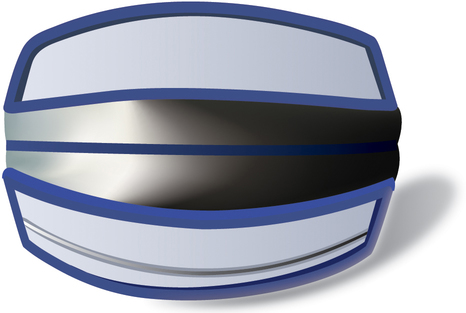After studying this chapter, students will be able to: • Describe the relationship between taking responsibility for one’s life and self-care. • Describe the major challenges facing the profession of nursing. • List ways that nurses can protect the image of nursing. • Describe how incivility escalates along a continuum. • Explain how nursing’s role in caring for the environment is related to health. • Describe four major components of the American Nurses Association’s Health System Reform Agenda. To enhance your understanding of this chapter, try the Student Exercises on the Evolve site at http://evolve. elsevier.com/Black/professional. “Make new friends but keep the old, one is silver and the other gold.” Many young girls learned this little song in Girl Scouts and remember it to this day. Some of you probably did, or maybe you heard your sisters sing it (and now, being reminded of it, have it stuck in your head!). Although not exactly a musical masterpiece, its message is an important one in a time of change: Keep what is valuable and move forward (Figure 16-1). Chapter opening photo from istockphoto.com. Nursing is a profession steeped in tradition yet responsive to the changing world around us. Nurses such as Lillian Wald and Isabel Hampton Robb were heroes, and their legacies continue today. Yet the work of nursing today rarely feels heroic; sometimes it just feels like the hard work that it is. Often, nurses are referred to as “unsung heroes” of health care. A recent project in the United Kingdom, “Unsung Heroes,” is an oral history and arts project that honors the lives of nurses who trained or worked at the Royal Infirmary of Edinburgh in Scotland (http://talesofthings.com/totem/group_view/55). The researchers in this project have created art pieces (Figure 16-2), usually in the form of a type of nursing badge (known as nursing pins in the United States), based on the stories of the nurses from this esteemed hospital that dates back to 1729, almost 50 years older than the United States. Nursing itself is stressful, as you no doubt know. Nurses bear heavy responsibilities that they take very seriously. There is no question that nurses save lives in ways that cannot be fully appreciated. The works of Aiken and of Buerhaus, both mentioned at different points throughout this book, have shown consistently that registered nurses (RNs) make a profound difference in the quality of care of patients in hospitals. Although the recent economic downturn eased the nursing shortage somewhat by keeping nurses employed, the aging of the workforce and the increasing need for professional nurses will create a shortage of nurses in all 50 states by 2015 and a shortage of one million nurses nationwide by 2020 (American Association of Colleges of Nursing, 2012). Care of the profession also means that as a nurse, you become aware of the image of nursing in the media and respond appropriately to both negative and positive portrayals of nurses. The Truth about Nursing, discussed in Chapter 2, is a campaign dedicated to “changing how the world thinks about nursing” (www.truthaboutnursing.org). This is a “watchdog” organization that keeps the image of nursing front and center in its mission. They recently featured a “naughty nurse” stereotype—a highly sexualized and demeaning portrayal of the profession—by the NBA Dallas Mavericks dancers, who danced at half time in revealing “naughty nurse” costumes complete with nurses caps, to the tune of an old song that begins “doctor, doctor . . .” Two recent examples of a more insidious negative view of nursing involve the use of the phrase “nursing secrets” on a popular television show hosted by a physician and in a popular magazine. This trivializes nursing knowledge as a list of “tips” rather than substantive science that promotes wellness, prevents serious complications, and otherwise improves lives.
Nursing’s challenge: The call for transformation

The challenge: Care of self
The challege: Care of the profession
Joining professional organizations
Protecting the image of nursing
![]()
Stay updated, free articles. Join our Telegram channel

Full access? Get Clinical Tree


Nursing’s challenge: The call for transformation
Get Clinical Tree app for offline access

